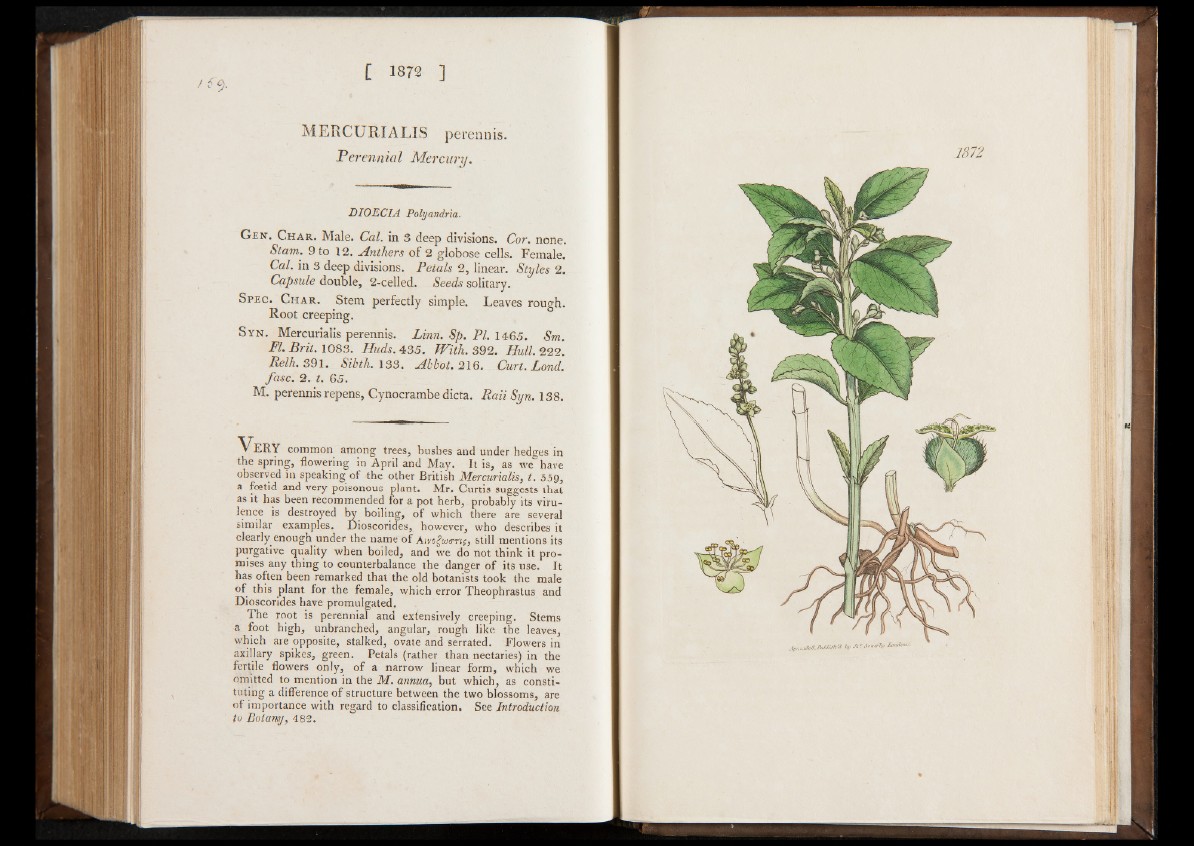
C 1872 ]
/ fcj.
M E R C U R IA L IS p e ren n is.
Perennial Mercury.
DIOECIA Polyandria.
Gen. Char. Male. Cal. in 3 deep divisions. Cor. none.
Stam. 9 to 12. Anthers of 2 globose cells. Female.
Cal. in 3 deep divisions. Petals 2, linear. Styles 2.
Capsule double, 2-celled. Seeds solitary.
Spec. Char. S tem p e r fe c tly simple. L e a v e s ro u g h .
R o o t c re ep in g .
Syn. M e rcu r ia lis perennis. Linn. Sp. Pi. 1465. Sm.
FI. Brit. 1083. Huds. 435. With. 392. Hull. 222.
Relh. 391. Sibth. 133. Abbot. 216. Curt. Lond.
fasc. 2. t. 65.
M. p erennis rep en s , C y n o c ram b e dicta. Ran Syn. 138.
VERY common among trees, bushes and under hedges in
the spring, flowering in April and May. It is, as we have
observed in speaking of the other British Mercurialis, t. 559,
a foetid and very poisonous plant. Mr. Curtis suggests that
as it has been recommended for a pot herb, probably its virulence
is destroyed by boiling, of which there are several
similar examples. Dioscorides, however, who describes it
clearly enough under the name of Aivogunrris, still mentions its
purgative quality when boiled, and we do not think it promises
any thing to counterbalance the danger of its use. It
has often been remarked that the old botanists took the male
of this plant for the female, which error Theophrastus and
Dioscorides have promulgated.
The root is perennial and expensively creeping. Stems
a foot high, unbranched, angular, rough like the leaves,
which are opposite, stalked, ovate and serrated. Flowers in
axillary spikes, green. Petals (rather than nectaries) in the
fertile flowers only, of a narrow linear form, which we
omitted to mention in the M. annua, but which, as constituting
a difference of structure between the two blossoms, are
of importance with regard to classification. See Introduction
to Botany, 482.